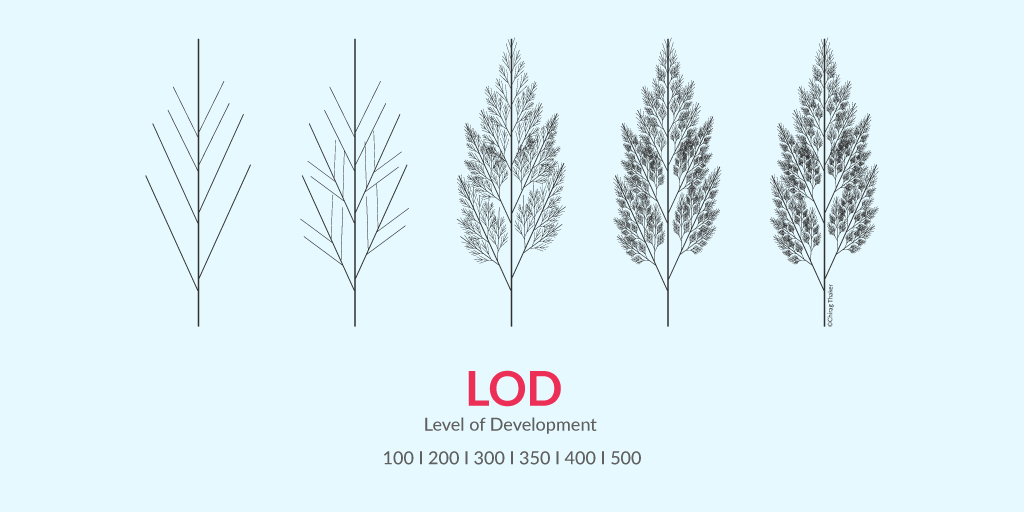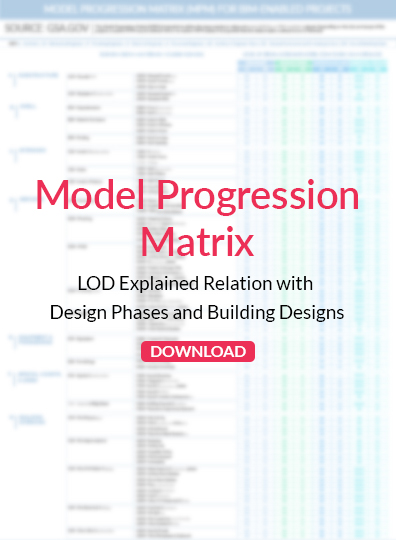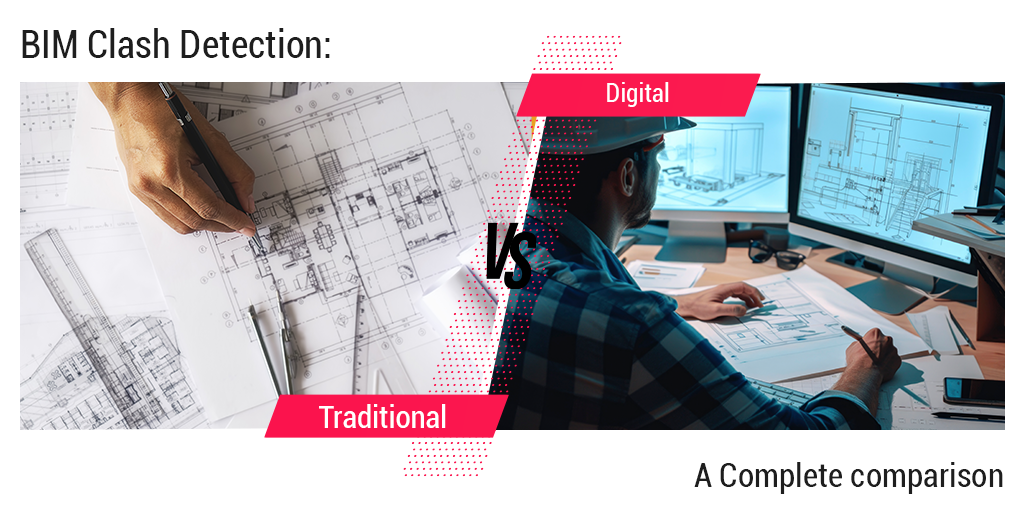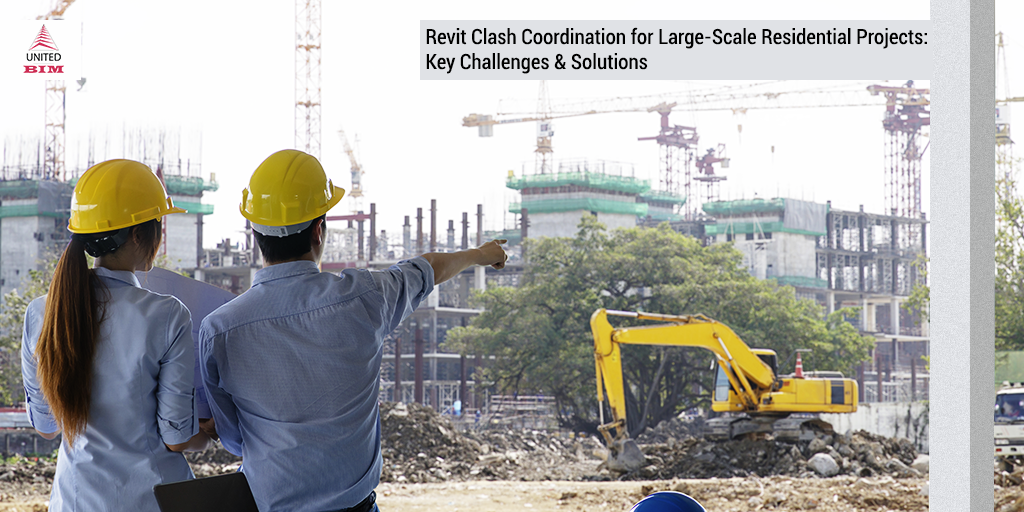Last updated on: January 3, 2025
Table of Contents
- Everything to Know About Level of Development (LOD) in BIM
- The Origin of LOD
- What is Level of Development (LOD)?
- BIM Level of Development vs. Level of Detail
- LOD and Design Phase
- Looking to Improve Your BIM Accuracy?
- Fundamental Definitions Associated with LOD
- The capability of a BIM Model according to LOD level
- Importance of LOD in an AEC Project
Everything to Know About Level of Development (LOD) in BIM
Reading Time: 7 Minutes
Level of development (LOD) is a set of specifications that gives professionals in the AEC industry the power to document, articulate, and specify the content of BIM effectively and clearly. Serving as an industry standard, LOD defines the development stages of different systems in BIM. By using LOD specifications, architects, engineers, and other professionals can clearly communicate with each other without confusion for faster execution.
The Origin of LOD
LOD was first introduced by the American Institute of Architects (AIA) in 2008 when it defined five different levels of development to define the detailing levels in a BIM model. But the concept of LOD was present much before that.
The first instance of LOD usage can be traced to a construction analysis software company, Vico Software, which made use of the LOD-like system to associate digital models with the cost of a project. The company made all the parameters and details associated with a digital model accessible to everyone at various stages of the design process.
Now there are six levels of development with an addition of LOD 350 (details below) and it is seen that 80 to 90 percent of the elements in a model should at a minimum reach LOD 350.
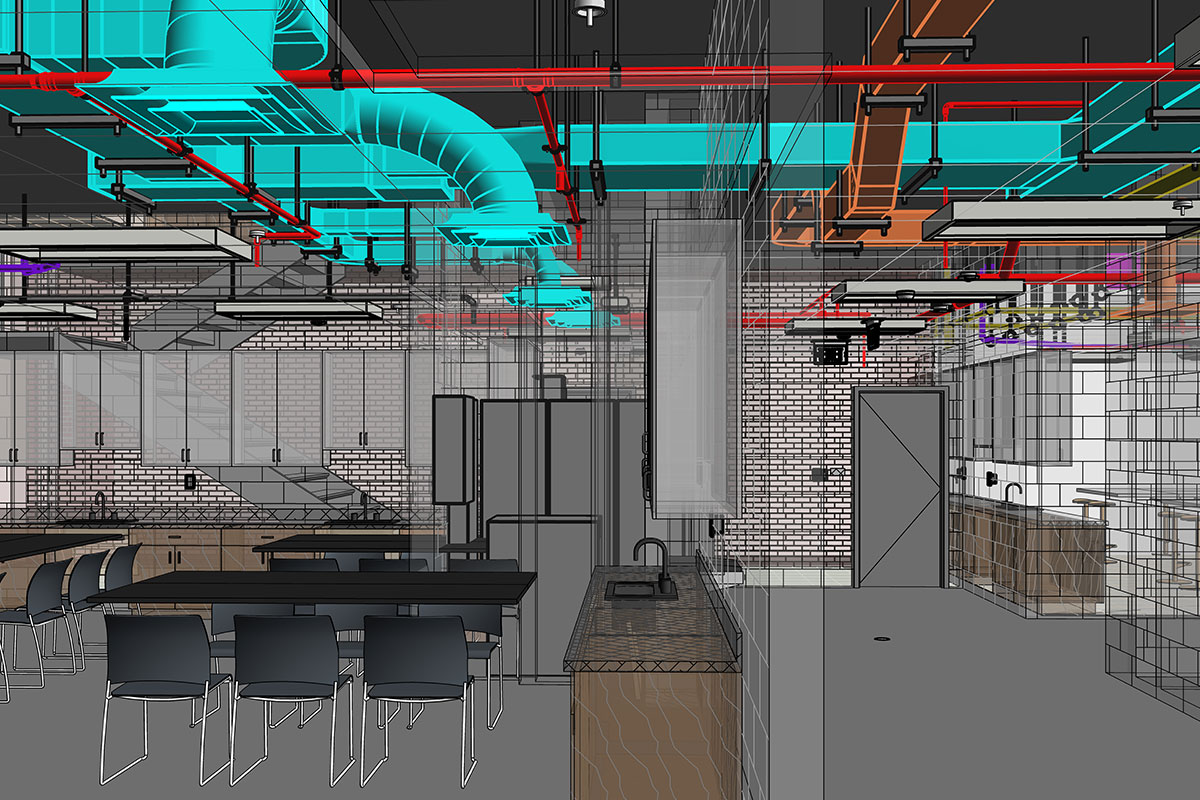
Let us send you a copy so you can share it and read it whenever you wish. Just let us know where to send it.
What is Level of Development (LOD)?
Level of Development (LOD) specification allows professionals in the industry to articulate how an element’s geometry and associated information has evolved throughout the entire process. It signifies the degree to which different members of the team can rely on information associated with an element.
The LOD specification helps designers define the inherent characteristics of the elements in a model at different stages of development. The clarity in illustration gives depth to a model, signifying how much and at which level someone should rely on a model’s element.
Using LOD, designers and engineers can communicate with other professionals who will be using the model further about the usability and limitations of a model. LOD specifications were designed to standardize the use of the LOD framework and use it as an efficient and collaborative communication tool.
BIM Level of Development vs. Level of Detail
LOD is usually interpreted as a Level of Detail instead of a Level of Development. This specification uses the concept of Level of Development. There are important differences.
Level of Detail is actually what proportion of detail is enclosed within the model element. Level of Development is the degree to which the components’ specification, geometry, and attached information have been thought through – the degree to which project team members may depend on the information when using the model. In essence, the Level of Detail can be thought of as input to the element, while the Level of Development is a reliable output.
Looking for LOD 100, 200, 300, 350, 400, 500 Modeling Services for your Design and Construction project. Contact us with your requirements.
LOD and Design Phase
The LOD doesn’t seem to be outlined deliberately by design phases. Rather, design phase completion, as well as any other milestone or deliverable, can be described through the LOD language. There are several important reasons for this approach:
1) The first reason is that there is no detailed standard available for the design phase. Earlier architects have created standards that existing within an organization. The standards differ from one organization to another, and it can even differ within a single organization according to the requirements of a project.
2) Building systems progress from concept to precise definition at different rates, so at any given time different elements will be at different points along with this progression. For example, after the Schematic Design phase, the model will include many elements at LOD 200, but will also include many at LOD 100, as well as some at LOD 300, and possibly even LOD 400.
Fundamental Definitions Associated with LOD
In the current context, there are six different levels of development that are defined by the American Institute of Architects (AIA). According to AIA, LOD outlines the design requirements at each stage.
At LOD 100, which is the pre-design stage, the model consists of 2D symbols and the masses to signify an element’s existence.
At LOD 200, the elements are partially defined by outlining their approximate quantity, size, shape, and location.
By LOD 300, the elements are defined with exact BIM dimensions and their relative positions bolstering precision.
LOD 350 describes the information about an element precisely and outlines an element’s relation and connection with other components.
The LOD 400 level outlines the basic information about the construction of various elements.
By LOD 500, the model begins representing the real-life functions of elements in a real building. Here are all the levels of development with their definitions in detail. At United-BIM Inc., we aim to deliver peace of mind and value through quality, speed, and a consultative approach.
LOD 100 - Conceptual
The Model Element may be graphically represented in the Model with a symbol or other generic representation. Information related to the Model Element can be derived from other Model Elements. Any information derived from LOD 100 elements must be considered approximate.
LOD 200 - Approximate Geometry
The Model Element is graphically represented within the Model as a generic system, object, or assembly with approximate quantities, size, shape, location, and orientation. Any information derived from LOD 200 elements must be considered approximate.
LOD 300 - Precise Geometry
The Model Element is graphically represented within the Model as a specific system, object or assembly in terms of quantity, size, shape, location, and orientation. Non-graphic information may also be attached to the Model Element. The project origin is defined and the element is located accurately with respect to the project origin.
LOD 350 - Precise Geometry with Connections
LOD 350 The Model Element is graphically represented within the Model as a specific system, object, or assembly in terms of quantity, size, shape, location, orientation, and interfaces with other building systems. Non-graphic information may also be attached to the Model Element.
LOD 400- Fabrication-ready Geometry
LOD 400 The Model Element is graphically represented within the Model as a specific system, object or assembly in terms of size, shape, location, quantity, and orientation with detailing, fabrication, assembly, and installation information. Non-graphic information may also be attached to the Model Element.
LOD 500 - Operational/As-built Models
LOD 500 The Model Element is a field verified representation in terms of size, shape, location, quantity, and orientation. Non-graphic information may also be attached to the Model Elements.
Source: BIM Forum
Suggested to Read: The Dimensions of BIM Explained – 3D, 4D, 5D, 6D, 7D BIM
The capability of a BIM Model according to LOD level
The Approved Use Guide by Real Estate department of the U.S. General Services Administration (GSA) provides a guide to understanding what the BIM model should be capable of at different development stages. i.e. LOD 200 BIM can be used to create estimated cost based on the measurement of a generic element.
| Model Content | LOD 100 | LOD 200 | LOD 300 | LOD 400 | LOD 500 |
|---|---|---|---|---|---|
| 3D Model-based Coordination | Site level coordination | Major large object coordination | General object-level coordination | Design certainty coordination | N/A |
| 4D Scheduling | Total project construction duration. Phasing of major elements | Time-scaled, ordered appearance of major activities | Time-scaled, ordered appearance of detailed assemblies | Fabrication and assembly detail including construction means and methods (cranes, man-lifts, shoring, etc.) | N/A |
| Cost Estimation | Conceptual cost allowance Example $/sf of floor area, $/hospital bed, $/parking stall, etc. assumptions on future content | Estimated cost based on measurement of the generic element (i.e. generic interior wall) | Estimated cost based on measurement of specific assembly (i.e. specific wall type) | Committed purchase price of specific assembly at buyout | Record cost |
| Program Compliance | Gross departmental areas | Specific room requirements | FF&E, casework, utility connections | ||
| Sustainable Materials | LEED strategies | Approximate quantities of materials by LEED categories | Precise quantities of materials with percentages of recycled and/or locally purchased materials | Specific manufacturer selections | Purchase documentation |
| Analysis/Simulation | Strategy and performance criteria based on volumes and areas | Conceptual design based on geometry and assumed system types | Approximate simulation based on specific building assemblies and engineered systems | Precise simulation based on the specific manufacturer and detailed system components | Commissioning and recording of measured performance |
Source: Approved Use Matrix by U.S. General Services Administration- Real Estate Services
The Benefit of Clarity Due to LOD for an AEC Project
Level of development is an extremely important element of the entire BIM process. Without LOD, it can become hard for everyone to work on the same page, creating inconsistencies that can hamper a project’s prospects. With the help of LOD specifications, communication and collaboration can become easier and faster, making room for the efficient deployment of resources at all levels of design and construction. Here are some of the benefits of the level of development specifications in the design process:
• Better collaboration and communication between different teams
With the help of standardized specifications and detailed information about all the elements, designers can provide guidelines and data for people working downstream to ensure zero lapses in execution and maintenance. LOD makes it easier to define a standard for contractors who must take care of BIM execution. At the same time, design managers can explain the requirements at various levels of the design process to the teams in a better way.
• Articulated Scope associated with a BIM deliverable
With the help of LOD, BIM models become more accurate. At the same time, all the teams including the owners can precisely specify the level of detail they want from a BIM model and get clarity on the scope of the final BIM deliverable.
Importance of LOD in an AEC Project
In an era where everything is handled digitally and all critical projects make use of a 3D model, it becomes hard for designers to make other teams understand the project expectations. Most often, handling a BIM model comes with a unique challenge- different people perceive different definitions of completion.
LOD creates a standardized definition of what completion means and eliminates the chances of discrepancies associated with project completion. Using LOD, teams working under different disciplines can communicate with each other in a better way with greater clarity. LOD enhances clarity in design by making use of advanced techniques and technology.
Here is a walk-through of the LOD stages of an ongoing hotel project – a three-story new construction on a two-acre land, 56,000 square foot, 95 rooms.
Overcoming the LOD Lexicon
If used without standardization, 3D BIM models can cause massive blunders owing to the difference in precision and accuracy definitions between two teams. LOD is structured to minimize errors with the help of a numerical lexicon that the designers and the end-users of a BIM model share for common understanding.
LOD is just like a key to a lock that can open the right gate for project completion. In other words, it’s a way to accurately execute various elements in a model. With LOD, design, and execution teams can come on the same page and see a model’s elements with clarity and understand when an element reaches the desired level of maturity that can be called as completion.
Concluding Remarks
Winding up the topic, we would like to throw some light on the fact that without a proper LOD specification in place, a BIM model can turn out to be less significant for the entire executing team. With proper Level of Development specifications, the accuracy, precision, and value of the entire BIM process as well as 3D models can be enhanced phenomenally for the entire lifecycle of a project. Interested in learning more about BIM? Get in touch with our experts, today. Contact us.
About the Author

Coordination Manager / VDC Manager at United BIM
With over 10 years of experience in the AEC industry, Akash Patel is a seasoned Coordination Manager and VDC Manager at United BIM. His expertise lies in managing complex MEP-FP coordination projects and leveraging cutting-edge BIM technology to ensure seamless collaboration and precision. Akash is dedicated to delivering high-quality, detailed models that meet the demands of modern construction. He is passionate about optimizing workflows and driving innovation within the BIM field.
